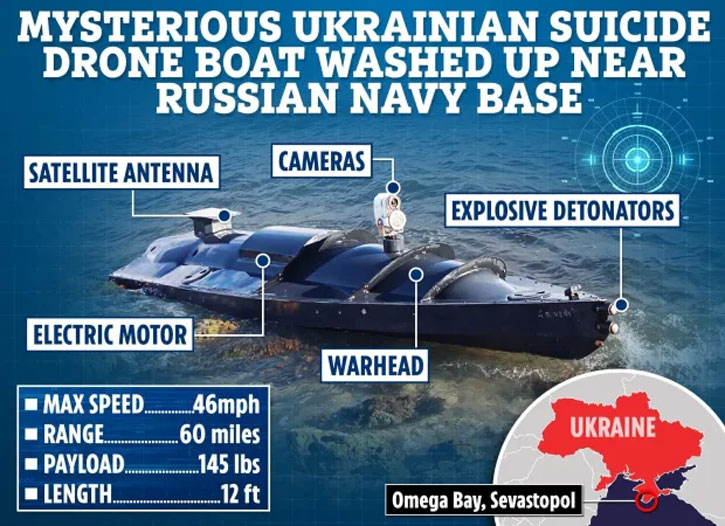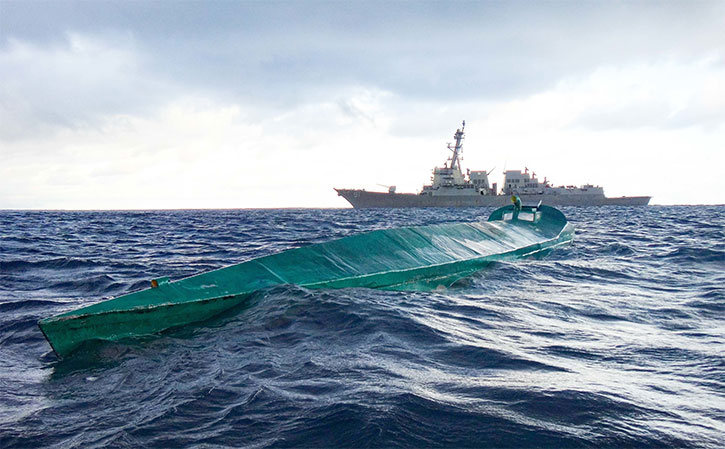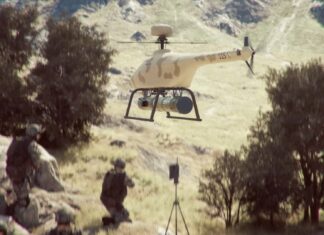The drone attack on the Russian Navy’s main Black Sea port of Sevastopol on 29 October represents a new phase in the modern drone war. While suicide boat attacks have been known since WWII, the recent strike demonstrates the unique value and potential of such combined attacks by unmanned aerial and surface vehicles (UAVs and USVs).
According to Russian MOD, the attack involved nine unmanned aerial vehicles and seven unmanned strike boats. The Russians claim their naval forces destroyed four boats and three were destroyed from shore. Some of the boats directed their attack against the floating net boom in Yuzhnaya Bay. The Russian MOD admitted the boom was damaged by the attack. Another video captured by the USVs and released online shows the boat moving at a Russian combatant ship at high speed, with a Mi-8 helicopter engaging with machine gun fire and larger caliber fire from the shore or other vehicles splashing nearby. The attack boat managed to close in on the ship, a Project 11356R Admiral Grigorovich-class frigate. There are reports that Admiral Makarov, reportedly the Black Sea Fleet’s new flagship after the Project 1164 Slava-class cruiser Moskva sank in April, was damaged in the attack. The Russian Defense Ministry announced that the Natya-class minesweeper (Project 266M) “Ivan Golubets” of the Black Sea Fleet received “minor damage” in an apparent Ukrainian attack on targets in Sevastopol, Crimea.
According to the Russians, the Ukrainian 73rd Marine Special Operations Center was responsible for this operation, assisted by British specialists. If the attack came from the city of Ochakov, Mykolaiv region in Ukraine, as the Russians claim, the strike force had traveled undetected to Sevastopol in Crimea, navigating +150 kilometers of rough waters at the open sea to create havoc at the protected enemy harbor. The recent attack was not the first operation of USVs in the black sea; the first discovery of such an attack boat was reported on 21 September 2022, as one such boat beached and was discovered at Omega Bay, just outside the entrance to the harbor and is in an area used by the Russian Navy. This attack caused the Russian Navy to call off patrols in the open sea and locate its vessels behind booms and barriers of the military harbor. The recent attack exploited this situation.
The coordination of the air and maritime components enabled the attackers to obtain intelligence in real-time, confuse the enemy by creating chaos at the base, and enable the explosive-laden strike boats to close in on their targets with high precision, as can be seen from the videos showing the attacking boats moving at very close proximity to large naval combatants.
[wlm_nonmember]Subscribe to read the background analysis of this operation[/wlm_nonmember]

[wlm_ismember]The satellite communications terminal installed on board the attacking vessels enables operators to examine the scene in real-time and direct the attack boats to the targets of the highest priority. The mystery kayak discovered in Sevastopol in September had a Starlink terminal mounted at the aft of the boat, along with forward-looking daylight and thermal cameras.
The same configuration can be used by all boats or, otherwise, having several boats and UAS share the broadband satellite terminal using local wireless links. It is assumed that such a boat can carry a warhead weighing 70 kg, likely an aerial bomb or artillery shell. The current vessels use a Kayak type of boat as a platform, but in the future, it is conceivable that semi-submersible boats, like those used by Columbian drug smugglers, would be used, having a much lower radar and visual signature.

This air and naval strike groups concept has important significance in future naval and coastal warfare. Leveraging the two-prone attack that complements the weaknesses of each element – vulnerability and lack of situational awareness of the surface vessels, and limited payload capacity and range of the aerial component. Together, a strike group provides the ability to obtain the situational picture in real-time, paving the way for the surface attack group by eliminating priority targets, enabling the surface vessels to coordinate their attacks and pursue their targets from different directions in a coordinated way.[/wlm_ismember]



















